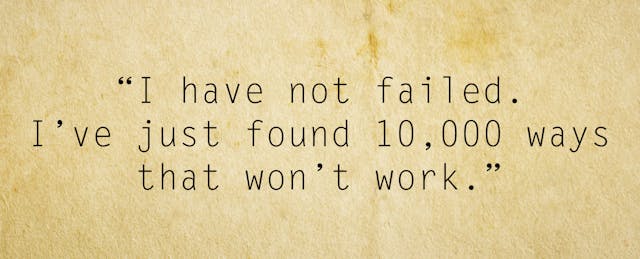As school leaders across the country seek to adopt social-emotional learning (SEL) as a formal part of curriculum, one question keeps surfacing: How can educators weave SEL into a day already bursting with “have-to’s” and “must-do’s”?
Literacy instruction can serve as a model of how to do just that. Traditional approaches to literacy instruction are bolstered by cross-curricular methods; the same holds true for SEL instruction. Resilience, in particular, is a core SEL skill that translates well across subject areas. Whether students are reading literature about a character’s challenging journey, or learning to persevere through a difficult word problem, resilience is always relevant to a student’s—and teacher’s—journey.
Moreover, pioneering work by Carol Dweck, Martin Seligman and Angela Duckworth has shown that the ability to cope and persevere through setbacks and adversity can indeed be taught and learned. By teaching skills ranging from self-management to responsible decision-making, educators can instill in students the positive mindsets, resilience, and grit they need to succeed in school and in life.
Whether your school has adopted an SEL program or not, you can build SEL into literacy instruction. The following actionable advice—focused on resilience—help educators build SEL concepts into everyday instructional activities.
1. Emphasize the Journey
Despite the changing educational landscape, there are some learning experiences that remain constant: reading landmark literature to study trailblazing individuals and pivotal moments in history. No matter what subject you teach, you can find a narrative to underscore the importance of resilience—whether it's a tale of a South Pole travel expedition or a biography of Malala Yousafzai, Martin Luther King Jr. or Bessie Coleman. In fact, whatever you’re already reading in English, science or history may showcase incredible acts of resilience.
In addition to discussing individuals’ accomplishments, try to emphasize the process, frustrations, state of mind, and points of learning along the way. If you point out examples frequently, students can learn to model and practice resilient thought, words and actions in their own lives. For example, when reading about the inventor Thomas Edison, you might highlight that he was fired from his first two jobs and made more than 1,000 attempts to create the light bulb. His continuous failure—or iteration, as we’d call it today—taught him to innovate.
When teaching fictional texts, you can apply lessons in resilience to the hero’s journey; discuss how heroes aren’t successful all the time. Pop culture is full of examples that students will find engaging: point out protagonists in “Star Wars,” “Lord of the Rings” or “Harry Potter.” Just as continuous success doesn’t make for good books and movies, it’s also not realistic in real life. When heroes fall, analyze the text to determine what they must be thinking, who helps them, and their mindset at the time. Discuss how despite repeated failures, all heroes complete their journey.
Nonfiction texts, specifically, can demonstrate to students that if real-life protagonists overcome adversity and persevere, students can too.
2. Teach the Brain's Biology
We rightly think of the brain as the center of knowledge, and yet we often don’t spend enough time teaching students about how the brain works—especially in the elementary and middle grades. Without this information, young people might not realize that their brains are malleable, believing instead that their brains are static containers for facts. This belief makes it difficult to instill the idea that SEL concepts can be taught.
Teaching students about the workings of the brain is a great way to introduce SEL into science and literacy curriculum. Have them read an article about the biology of brain and impulse, and how during key development years the prefrontal cortex is still forming. Show them how stress and other emotions impact their brain development. Teaching students what’s happening in their bodies is the first step to empowering them to take control of their behavior and their state of mind.
Next, students can read about the power of positive thinking and their ability to choose their own mindset. Augment lessons by watching and discussing powerful podcasts and TED talks, many of which feature young people. Kid President is a perennial favorite of teachers and students alike. Depending on the subject material, it may be useful to follow up with comprehension and discussion questions and vocabulary review.
Have students use what they learn about biology and mindset to create a resilience toolkit. As they’re reading the works referenced in this article, ask them to collect strategies for building resilience and jot down meaningful quotes—from fictional characters as well as real life heroes. These toolkits can offer much needed reinforcement and support when students hit inevitable bumps in their literacy learning, such as struggling to comprehend a text or getting a disappointing test result.
3. Help Students Find Their Voice
Students today are a part of a unique generation. They are engaging in less risky behavior, and their performance on the famous marshmallow test of delayed gratification has actually improved among certain cohorts vs. previous generations—indicating increased self-management skills, self awareness and self motivation. The Parkland student advocates are a notable example; they’re showing many students that they can choose not to sit idly when they perceive a need for change. Instead, they can find their agency and their voice.
History lessons are an ideal place for teachers to foster both student agency and voice—with literacy playing a key role. For example, you might start with a working definition of injustice. Then, to connect history to the present, read and discuss past events and time periods that were characterized by student activism. Although it may look different at different schools, research shows that activism is good for kids. Having opportunities to contribute to the world around them makes young people feel useful and valued, reinforcing SEL competencies such as motivation, goal setting and organizational skills.
Help your students take active roles in their own communities by examining the relationship of the individual to broader society—exploring their concerns and what influence they can exercise over those concerns. This approach reinforces students’ own agency, and how it can be deployed for positive change. Teachers looking to amplify their students’ voices can also reference this free Newsela text set.
Compared to a just a few years ago, we know so much more today about why some students are hindered by adversity, while others persevere and are able to use it as a launching pad to excel—both academically and in later life. With SEL-informed literacy instruction, we have the power to help young people build the resilience they need to be successful today, tomorrow and throughout their lifetimes.
An SEL Reading List
Use these texts about resilience and determination to embed SEL into literacy instruction:
Elementary School
| Immigrant book club parents |
| Drumline can do anything |
| Jane Goodall chimps |
| Space camp books |
Middle School
| Finding genius |
| No legs, no problem |
| Top aerialist Ashley Caldwell heading for her third Olympics |
High School
| Bangladeshi girls surf |
| Change dress code |
| Stay hungry. Stay foolish. Steve Jobs speech |
| Medal of Honor recipients |



